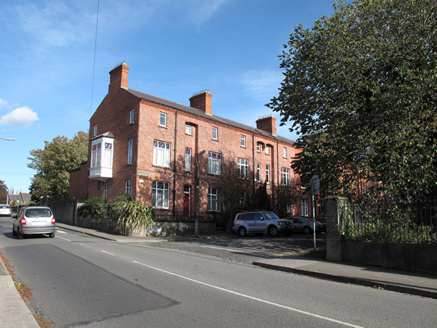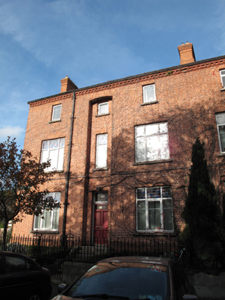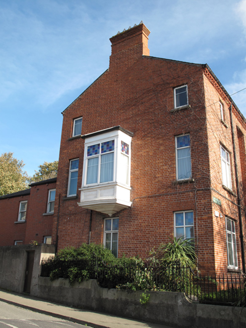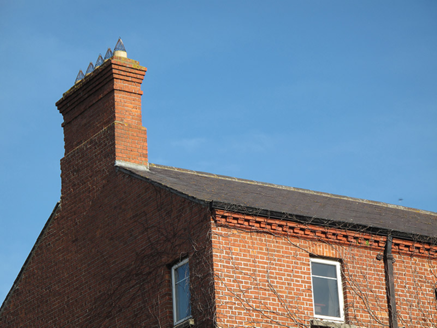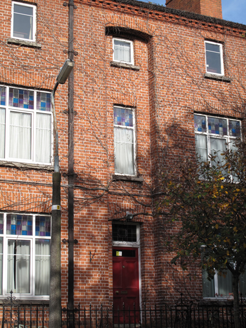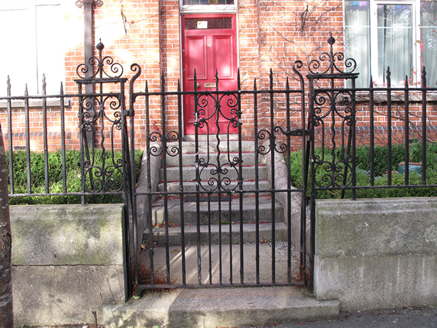Survey Data
Reg No
50120022
Rating
Regional
Categories of Special Interest
Architectural, Artistic
Original Use
House
In Use As
House
Date
1890 - 1910
Coordinates
316592, 236793
Date Recorded
17/11/2017
Date Updated
--/--/--
Description
End-of-terrace three-bay three-storey house, built c. 1900 as one of thirteen, having two recent returns to rear (north) elevation and recessed entrance bay to front topped with camber arch. Pitched slate roof, hipped to return, with terracotta ridge tiles, stepped red brick chimneystacks, terracotta eaves course with moulded corbels and stringcourse, and cast-iron box-profile rainwater goods. Red brick walling, laid in Flemish bond, to front and west elevations, with brick plinth course having chamfered brick capping; English garden wall bond to rear. Square-headed window openings with granite sills and replacement uPVC windows, and having recent one-over-one pane timber sliding sash windows to rear. Timber-framed box-bay oriel window to first floor to side with timber panelled apron. Square-headed principal doorway has timber panelled door with glazed panel and coloured glass overlight, approached by six granite steps flanked by walls with moulded render copings. Boundary has wrought-iron pedestrian gate and cut granite step to front, flanked by decorative panels, with matching railings set on carved granite plinth wall on rendered base, enclosing yard to front and side of house.
Appraisal
This well-composed house shares the parapet height and fenestration arrangement of the adjoining buildings, creating a strong sense of unity. Its three-bay form and oriel window set it apart from the remainder of the terrace, imbuing this corner-sited building with an increased sense of grandeur. The symmetry of the façade is enhanced by the narrow central recess, in which the entrance is set. Decorative moulded terracotta and brick is used to good effect to subtly enliven the façade, and embody the decorative tradition of the Arts and Crafts movement. The decorative railings, cast at the foundry of Hill & Smith, attest to the high quality of ironwork employed at the start of the twentieth century. Their complete retention contributes to the intact early suburban residential character of the terrace, an enclave that retains its original character, with well-preserved houses creating a strong sense of rhythm and order.
